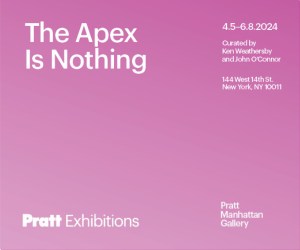
Contributed by Katie Fuller /� “Our Heads Are Round So Our Thoughts Can Change Direction,” the Francis Picabia exhibition at MoMA, tells a story of a curious man with a need to experiment with more than one style, medium, process, or subject. As a result, this retrospective is inspiring, entertaining, and whiplash-inducing.

The first room is filled with the impressionistic landscapes that established Picabia as a master painter. Yet he didn�t enjoy immersing himself in nature. Subverting impressionistic ideals, these paintings were in fact renderings of photos he found, putting Picabia ahead of his time in contemplating the reproduction of an image as something entirely new.
The shift in style from the first room to his large abstract paintings, while jarring, reflects the painter�s phenomenal range. Picabia�s Edtaonisl and Udnie, a powerful pair, show his facility for harmonizing line with shape, and somber colors with vivid light.

Even with his success in abstraction, Picabia compulsively experimented with other styles. There�s nothing too painterly about his many renderings of different industrial objects, but they exhibit a sharp eye for design. Picabia�s brilliant dalliance with Dada moved him to replicate these particular objects on paper, but he didn�t stop there. Later he introduced manic figures into his paintings. It was with this work that Picabia fully blossomed as a provocative, satirical jokester.

The �Transparencies� series of 1927-30 are among the most stylistically cohesive paintings in the show. These works are magnificently layered, with smooth lines and a sepia palette. They involve biblical allegories, and many European faces stare solemnly into the distance. These works lack the knowing humor of some of the other paintings, but they offer a garishly serious vision that is still unique.Picabia�s determination to experiment was admirable and remarkable. He wasn�t afraid to make �bad� art, and intended whatever he produced, for better or worse, to express his own innermost ideas and desires. This artist refused to be pinned down and willfully eluded boredom, and it�s worth�a visit�to see the full range of his work in one place.


“Picabia: Our Heads Are Round so Our Thoughts Can Change Direction,” Museum of Modern Art, midtown, New York, NY. Through March 19, 2017.
About the author: Katie Fuller is a painting student at Parsons School of Design at the New School. She is an editorial intern at Two Coats of Paint.
Related posts:
Claiming Modernism
Schwabsky coins the term “retromodernism” for work that references postwar-era abstract easel painting

















